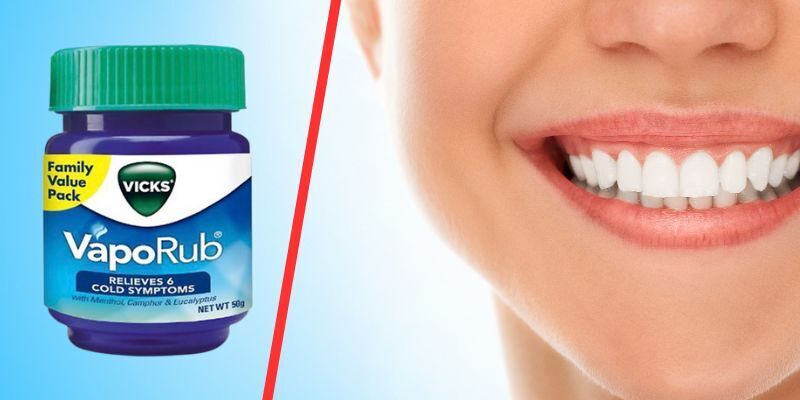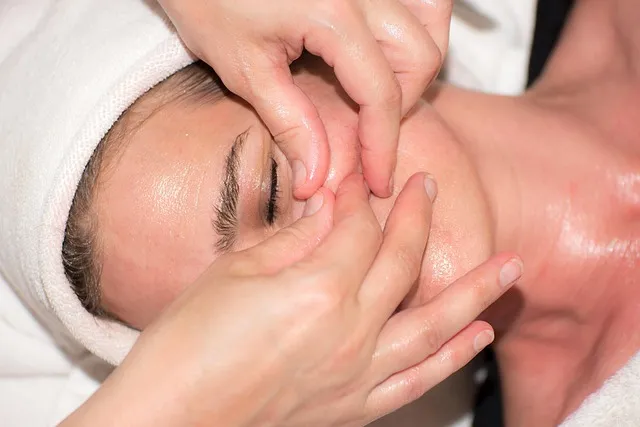|
The stages of wound healing include hemostasis, inflammation, proliferation, and maturation. Each step in the wound healing process supports tissue repair, collagen buildup, and gradual restoration of healthy skin. |
What happens inside your skin the moment a small cut bleeds? Most people stop at a bandage and move on. Yet beneath that surface, the body starts a quiet, precise chain of repair. The stages of wound healing follow a sequence that doesn’t ask for attention but deserves it.
There’s clotting, cleaning, rebuilding, and strengthening, each timed with near perfection. You can almost imagine the body running its own emergency service. Understanding this rhythm helps not only in basic care but also in preventing complications later.
What Are the Stages of Wound Healing?
Healing is not random. It’s a well-planned biological routine that turns injury into recovery. The wound healing process works through four organized phases: hemostasis, inflammation, proliferation, and maturation. These are like checkpoints; the body moves from one to the next only after finishing the previous job. Though sometimes they overlap. And that’s fine; biology isn’t always neat.
When a wound forms, clotting starts first. Then, white blood cells clean up the mess. Later, fibroblasts fill the space with new tissue, and collagen rebuilds strength. Most healthy wounds close within 4 to 6 weeks. Anything longer is labelled chronic, and statistics show chronic wounds affect about 10.5 million U.S. Medicare patients each year.
|
Healing Phase |
Primary Function |
Duration Range |
|
Hemostasis |
Stops bleeding through clot formation |
Minutes to hours |
|
Inflammation |
Cleans and protects the wound area |
1–6 days |
|
Proliferation |
Builds new tissue and collagen |
4–24 days |
|
Maturation |
Strengthens repaired skin |
Weeks to months |
Each step is crucial in the process of wound healing, and while it may feel slow, every phase has its own purpose and timing.
Stage 1 – Hemostasis Phase: Stopping Bleeding and Sealing the Area
As soon as skin tears, the body wants to stop blood loss. Blood vessels tighten. Platelets move toward the injury. They stick together and make a small plug. Then a protein named fibrin forms threads that lock the clot in place.
This is the start of the repair. You may notice a thin scab forming at the surface. That scab is the first protective shield. It keeps dust and germs outside so the healing can continue inside.
How to support this phase:
-
Rinse the wound with clean water or saline.
-
Use sterile gauze.
-
Apply gentle pressure if bleeding returns.
-
Avoid scrubbing or rubbing the wound.
A stable clot is the foundation. It allows the next phase to begin smoothly.
Stage 2 – Inflammation Phase: Cleaning and Protecting from Infection
After the bleeding stops, the body shifts its focus. Now the job is to clean the wound.
White blood cells move into the area. They remove germs, dirt, and damaged cells. You may see:
-
Redness
-
Mild warmth
-
Slight swelling
-
Light soreness
These are normal signs of healing. People often feel something is wrong here, but this phase is necessary.
To maintain healthy inflammation:
|
Do |
Avoid |
|
Keep the wound slightly moist |
Letting the wound dry out completely |
|
Hydrate well |
Smoking (reduces oxygen) |
|
Wash your hands before touching the wound |
Scratching or peeling scabs |
If redness spreads outward fast, or pain increases sharply after improving, that can suggest infection or delayed wound healing. Seek medical evaluation early.
Stage 3 – Proliferation Phase: Building New Tissue
This phase is also called the rebuilding phase. Here, the body creates new tissue, known as granulation tissue. It looks pink, soft, and slightly bumpy. This is a good sign. It means tissue regeneration is active.
Here’s what happens inside:
-
Fibroblasts produce collagen fibers.
-
New blood vessels grow to bring oxygen.
-
Wound edges slowly come closer.
-
Thin new skin cells spread from the edges.
This is the heart of the wound repair and regeneration stage.
Nutrition becomes extremely important here because collagen production in wound healing depends on specific nutrients.
Foods that help wound healing:
|
Nutrient |
Role |
Food Sources |
|
Protein |
Builds tissue |
Eggs, fish, curd, beans, peanuts |
|
Vitamin C |
Helps collagen form correctly |
Oranges, guava, amla, capsicum |
|
Zinc |
Speeds cell repair |
Nuts, seeds, chickpeas, dal |
Also:
-
Use breathable wound dressings that maintain light moisture.
-
Avoid stretching the wound area.
-
Sleep and rest help oxygen reach the wound.
Stage 4 – Maturation (Remodelling) Phase: Strengthening Skin and Scar Formation
When the wound looks closed, the repair is not finished. Inside, collagen fibers are still rearranging and tightening.
This phase begins around week 3 and may continue up to 12 months. The repaired skin reaches around 80% of its original strength. Never fully 100%.
The scar formation process depends on collagen balance. If collagen builds too much, scars may become raised (keloid or hypertrophic). If collagen is low, scars may look thin.
Helpful practices:
-
Avoid strong sun on the scar (sun darkens scars quickly).
-
Use silicone gel sheets if the scar is raised.
-
A very gentle massage improves flexibility after a few weeks.
The body continues refining the skin quietly. Healing is not only about closure; it is about rebuilding strength.
Factors That Affect Wound Healing
Healing depends on many wound healing factors, some biological, others lifestyle-related. The body naturally knows how to repair itself, but external influences can speed or slow it down.
Internal Factors:
-
Nutrition: Collagen formation depends heavily on protein, vitamin C, and zinc.
-
Oxygen Supply: Good blood flow ensures oxygen reaches tissues for proper repair.
-
Chronic Illness: Diabetes and vascular conditions reduce circulation, delaying recovery.
-
Age: Older adults have slower cell turnover, making recovery longer.
External Factors:
-
Smoking and Alcohol: Reduce oxygen levels and damage blood vessels.
-
Stress: Raises cortisol, which suppresses immune function.
-
Infection: The biggest cause of delayed repair in the wound healing process.
If a small cut takes longer than 6 weeks to close, it may have transitioned into a chronic wound. At that point, a professional assessment becomes necessary. Maintaining balanced nutrition and regular cleaning often prevents most wound healing complications before they start.
Signs of Proper vs Delayed Healing
Every wound has its own timeline. You can usually tell if things are going right by watching small daily changes, color, texture, pain, and how the edges behave. The body follows a rhythm in the wound healing process, but sometimes that rhythm stumbles. That’s when you notice swelling that lingers or tissue that doesn’t look fresh anymore.
Proper Healing Signs:
-
The skin shifts from bright red to soft pink as days pass.
-
Edges look cleaner and pull together slowly.
-
Pain fades instead of spiking again.
-
There’s little to no fluid, maybe just a clear trace.
Signs of Delay:
-
Redness that refuses to settle down.
-
Yellow or green discharge that smells bad.
-
Thick scabs that crack or bleed again.
-
Heat or streaks spreading away from the wound.
Most of the time, delayed recovery links back to circulation or infection. For people with diabetes, the wound recovery stages can take longer because oxygen and nutrients move more slowly. When the pain grows instead of shrinking after a week, don’t wait it out. That’s your body asking for help. Early treatment keeps things clean, limits scarring, and prevents deep tissue trouble.
Tips for Faster and Safer Wound Recovery
Healing takes time. It’s not something to rush. The body moves at its own rhythm, and every step in the wound healing process has a reason. Still, a few habits make that process smoother, less guessing, fewer setbacks.
1. Keep It Clean and Covered
Start simple. Rinse the wound with mild saline or plain water, nothing fancy. Cover it with sterile gauze to keep dirt out and hold in a bit of moisture.
-
Skip alcohol wipes; they burn and hurt new tissue.
-
Change the dressing when it’s damp or loose.
-
Always wash your hands before touching the wound.
Moisture helps cells crawl and close the gap faster. That’s what keeps the wound healing stages moving forward quietly underneath the surface.
2. Support With Good Nutrition
Skin can’t rebuild without fuel. Protein, zinc, and vitamin C are what the body uses to patch and repair. You don’t need supplements, just better meals.
-
Fish, eggs, beans, and greens work well.
-
Drink enough water so blood flow stays steady.
-
Cut down on packaged food; it slows the wound repair process.
Think of food as part of your medicine cabinet. What you eat shows up in how your skin heals.
3. Manage Health Conditions
Some health issues slow things down. Diabetes and poor circulation make the phase of wound healing stretch longer than it should. Keeping those steady makes all the difference.
-
Watch your blood sugar if you’re diabetic.
-
Check your feet daily if you have nerve problems.
-
If a cut refuses to close, talk to your doctor early.
Good control keeps oxygen flowing and lets new tissue form properly. Skipping checks just adds weeks to the recovery.
4. Avoid Unnecessary Movement
Movement sounds harmless, but pulling at a wound too soon reopens fragile skin. That’s why rest matters.
-
Avoid stretching or bending near healing areas.
-
Use light compression if swelling builds up.
-
When it throbs, stop; that’s the body saying enough for now.
Patience helps more than any cream. Letting the skin rest keeps the wound healing timeline on track and scars thinner later.
5. Watch for Early Infection
Wounds usually tell you when something’s off. Redness spreading out, thick yellow fluid, or heat that won’t fade, those are signs you shouldn’t ignore.
-
Clean gently again with saline and cover it fresh.
-
Don’t pour harsh antiseptics; they destroy good cells too.
-
If pain grows worse instead of easing, see a professional.
Catching problems early protects the skin and keeps the wound healing process running normally. Small steps now prevent long, slow healing later.
Final Thoughts
You know what’s fascinating? The stages of wound healing remind us how quietly the body fixes itself when we just give it a chance. From the first clot to that faint scar, it’s all strategy, no drama. The skin does its job like a careful craftsman, repairing, stitching, and smoothing. Most wounds close in about four to six weeks, but the work doesn’t stop there. Deep inside, collagen continues to tighten things up for months, rebuilding strength bit by bit.
Scars? They’re not mistakes. They’re proof that healing happened, that the body handled what it needed to. Sometimes not perfectly, but well enough to move forward.
Frequently Asked Questions
How long does a wound take to heal?
Most everyday wounds heal in 4 to 6 weeks if blood flow and nutrition are good. However, deeper cuts and slow circulation may take longer. Even after a wound looks closed outside, internal strengthening continues for months.
What slows down wound healing?
Smoking, dehydration, low protein intake, infection, and chronic illnesses like diabetes slow healing. When oxygen and nutrients cannot reach tissue smoothly, collagen forms slowly, and closure takes more time.
What foods help wound healing?
Eggs, fish, nuts, beans, oranges, amla, lemon, spinach, and seeds help because they supply protein, vitamin C, and zinc. These nutrients support collagen building and healthy tissue growth.
How to know if the wound is healing properly?
It becomes smaller, turns soft pink, and the pain reduces. If the wound smells bad, produces yellow fluid, or pain increases suddenly, seek medical help.
What are the four stages of wound healing?
The four stages are hemostasis, inflammation, proliferation, and maturation, each guiding the wound healing process and helping tissues recover in a steady, natural cycle.
How long does each stage of wound healing last?
Most wounds heal within four to six weeks. The stages of wound healing may take longer for deep injuries or slower circulation, depending on overall care.
How to know if a wound is healing properly?
Healthy wounds shrink daily, look pink, and hurt less. There’s no odor, no pus, and the skin slowly rebuilds from the edges.
Why is my wound not healing?
Usually poor blood flow, low nutrition, or infection. Diabetes, smoking, or stress also slow healing more than people realize.
How to speed up wound healing naturally?
Eat protein-rich foods, stay hydrated, and keep it clean. Avoid picking or drying it out. Consistent care makes recovery smoother.
-User-1754380331.png)
Reviewed by







